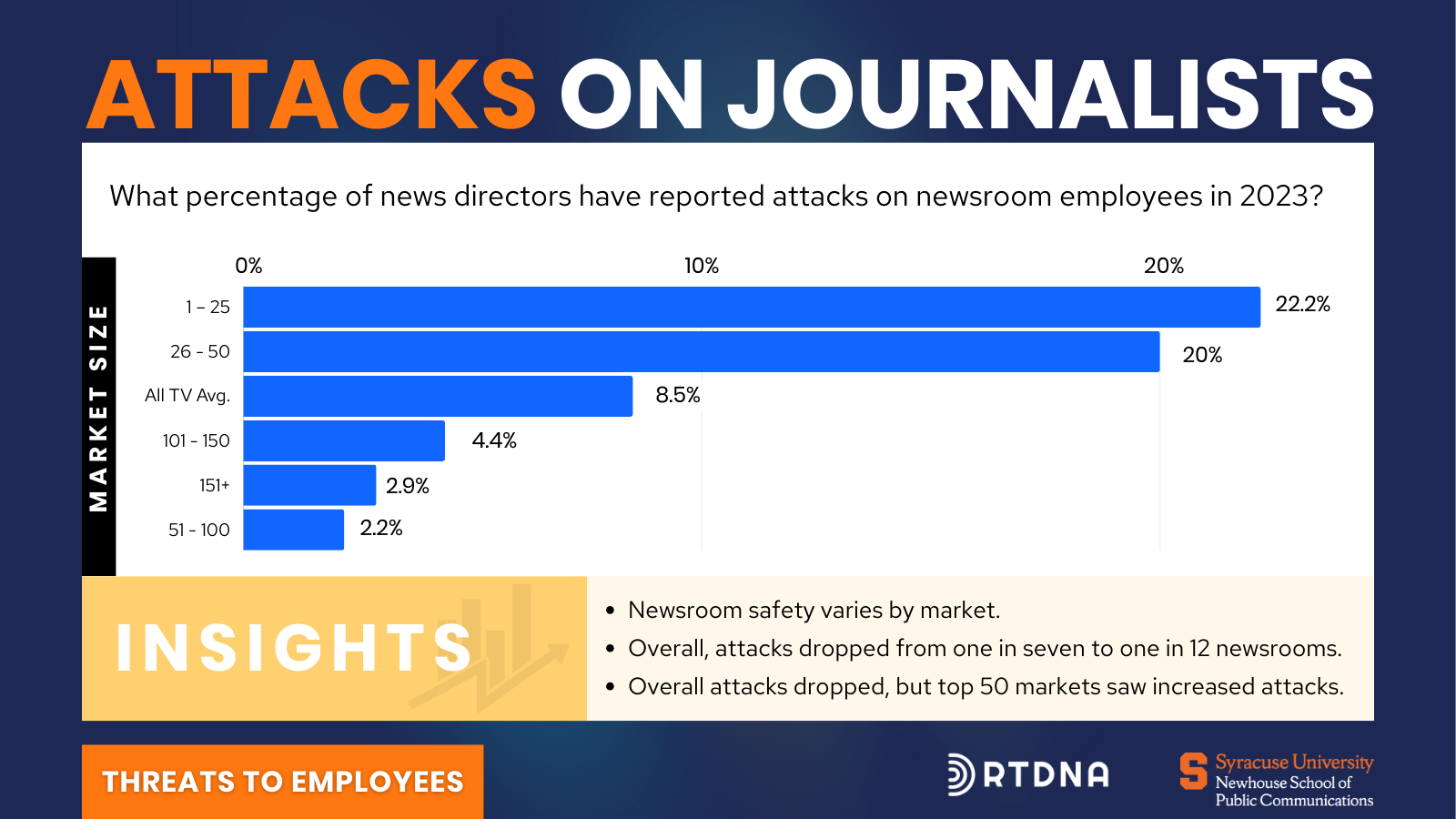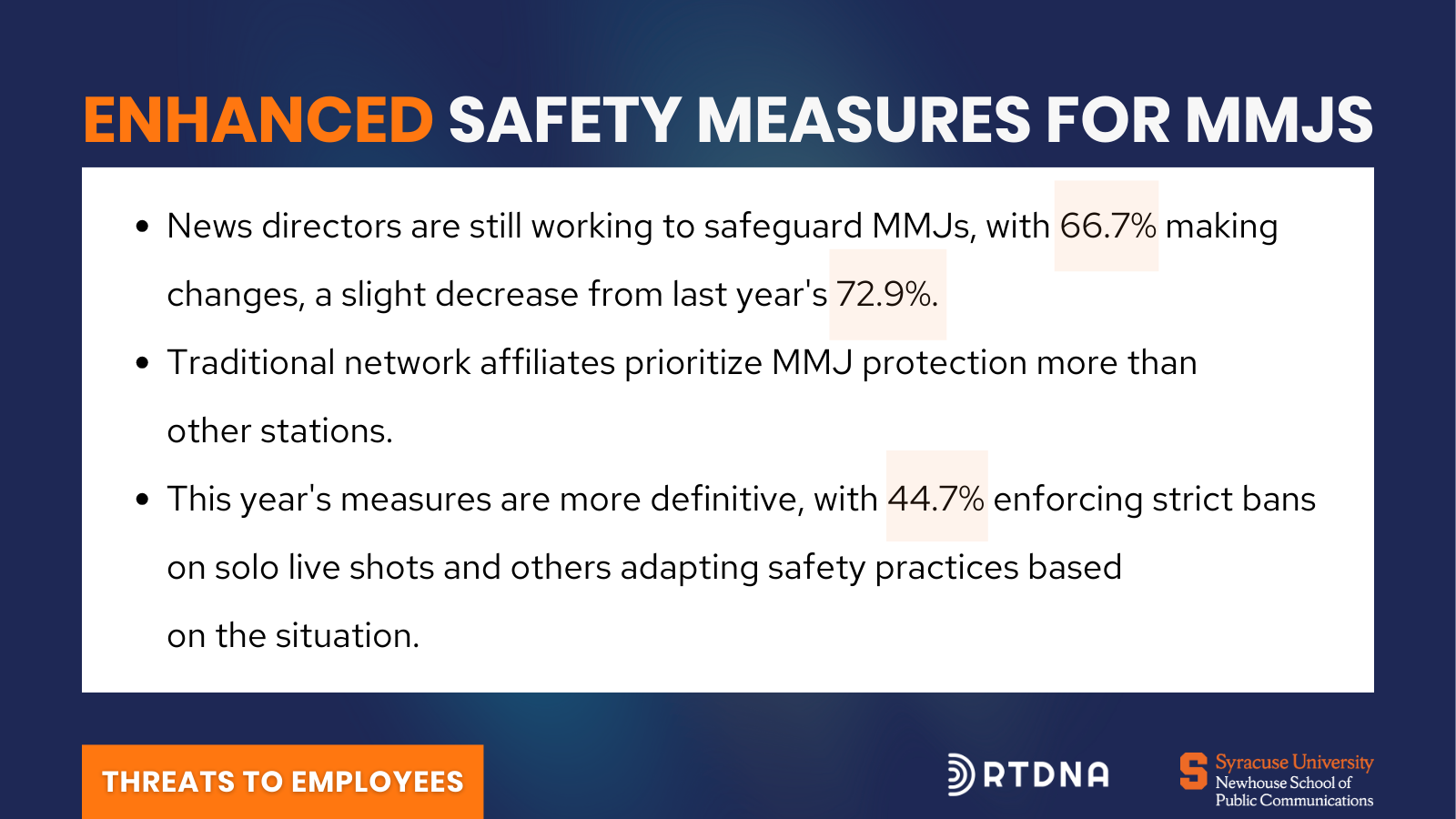Are reporters safer now? It depends on the market

By Bob Papper and Keren Henderson
Aug. 8, 2024 — How safe you are as a newsroom employee depends on the market size you work in. Overall, attacks on newsroom employees dropped from one in seven TV newsrooms last year to one in 12 this past year. But you would not have noticed that in the top 50 markets. Attacks in the top 25 markets were unchanged from a year ago (at 22%), but attacks in markets 26 to 50 went up from 15% to 20%.
The percentage of attacks in the last year dropped in markets 51 and smaller. A year ago, news directors in the West reported the most attacks, followed by the Northeast. This year, the two areas reversed order. The Midwest and the South were both much lower and, again, almost exactly the same.

When we first asked about attacks, almost half were against crews covering what news directors described as riots, protests and civil unrest. Stations beefed up security and installed fences, locks and gates. One-person crews became two-person; two-person crews sometimes became three. Over time, the attacks have become much more varied and random.
We again asked whether news directors have changed to better safeguard MMJs. Two-thirds (66.7%) say they have, which is down a bit from last year’s 72.9%, but it may reflect that news directors had already changed the past. Last year, the biggest newsrooms were more likely to have instituted MMJ safeguards. This year, the efforts are more spread out. Traditional network affiliates prioritize the protection of MMJs more than other commercial or non-commercial stations.

About the Authors
Bob Papper is Research Professor of Broadcast and Digital Journalism at Syracuse University and has worked extensively in radio and TV news.
Keren Henderson is Associate Professor of Broadcast and Digital Journalism at Syracuse University.
This research was supported by the S. I. Newhouse School of Public Communications at Syracuse University and the Radio Television Digital News Association.
About the Survey
The RTDNA/Newhouse School at Syracuse University Survey was conducted in the fourth quarter of 2023 among all 1,876 operating, non-satellite television stations and a random sample of 4,764 radio stations. The television response rate is different for every question, but Valid responses came from as many as 1,387 television stations (73.9%) and 631 radio news directors and general managers representing 1,902 radio stations. Some data sets (e.g. the number of TV stations originating local news, getting news from others and women TV news directors) are based on a complete census and are not projected from a smaller sample.
